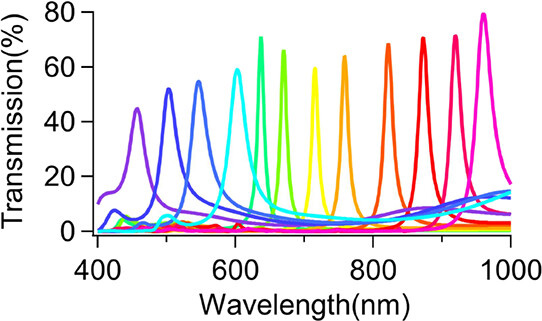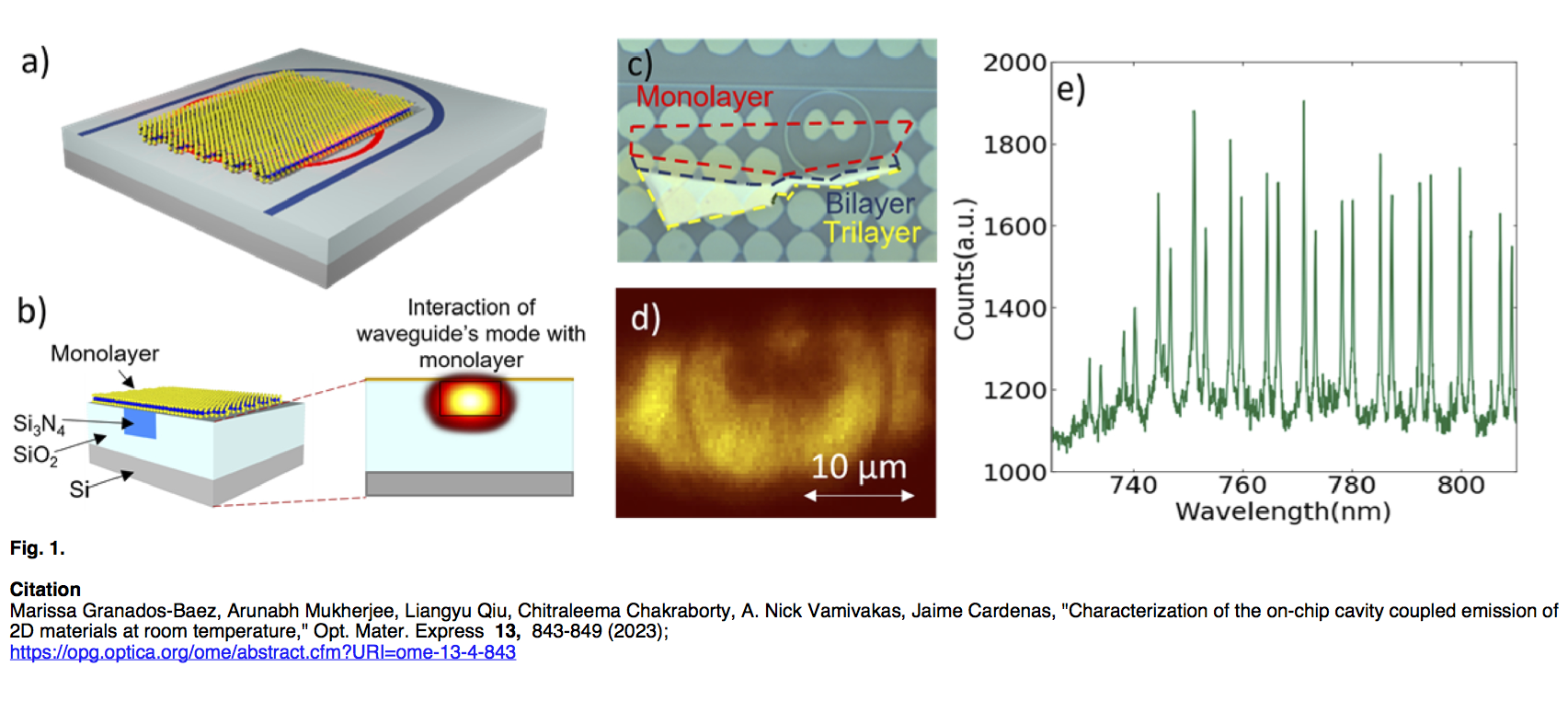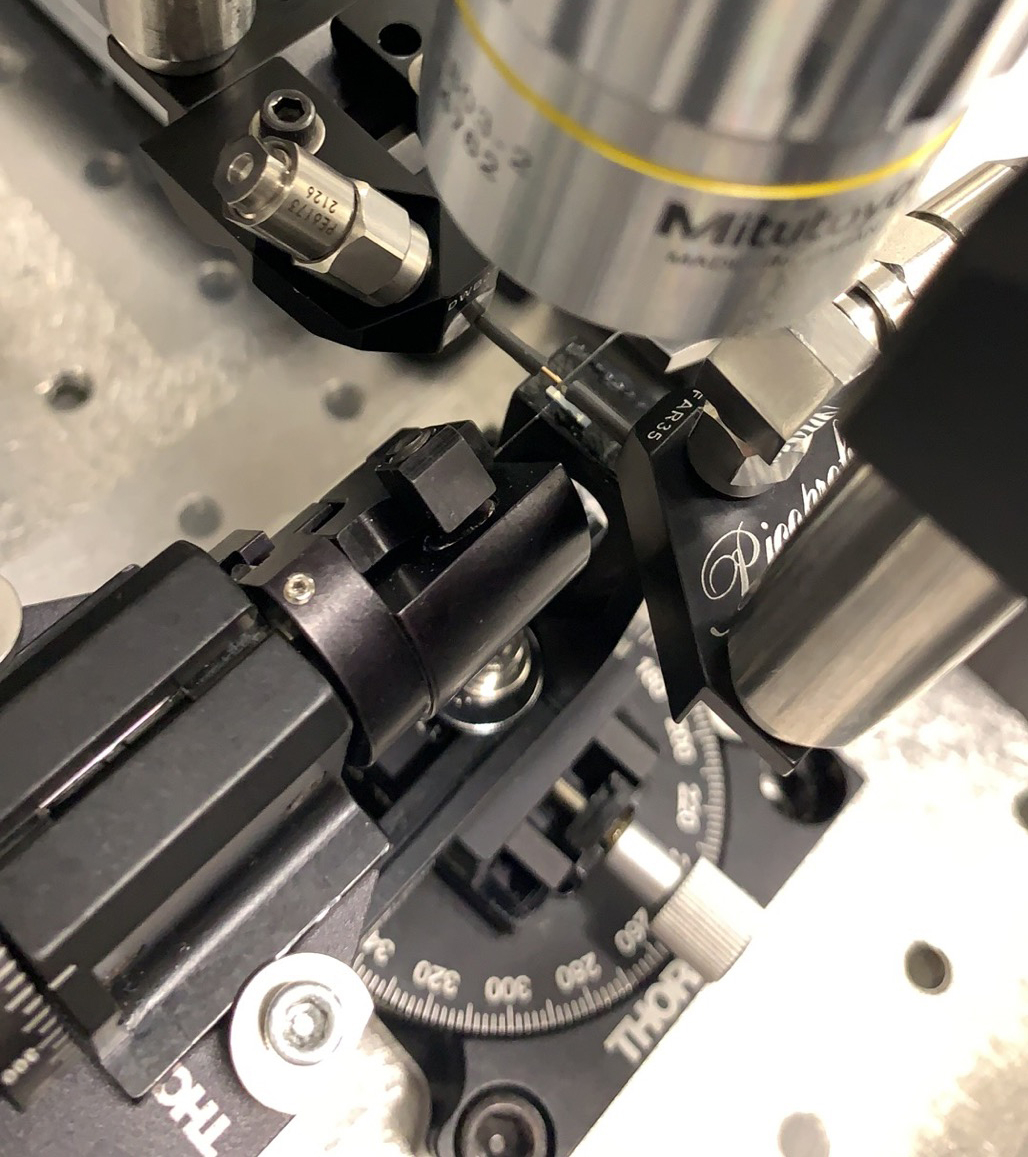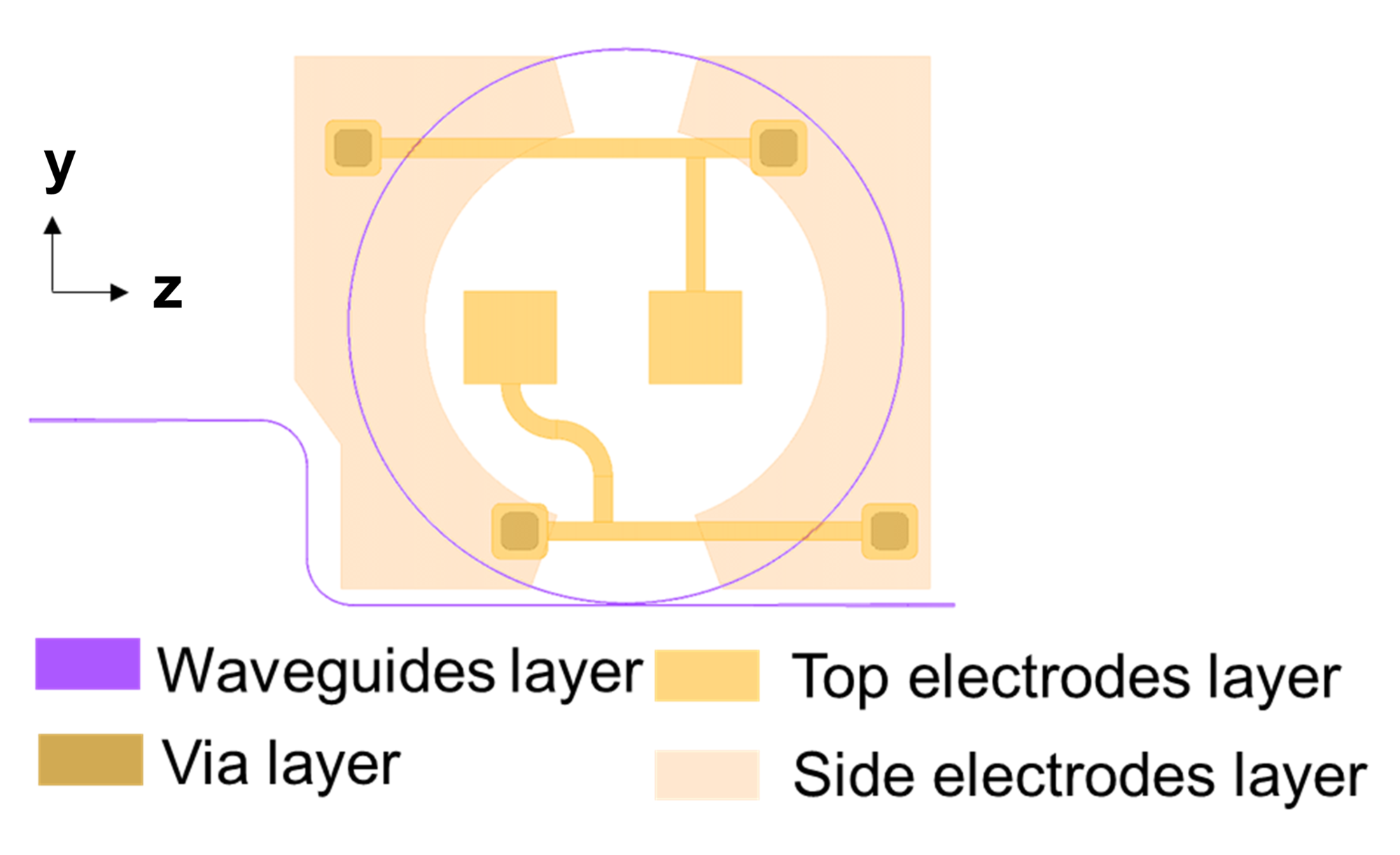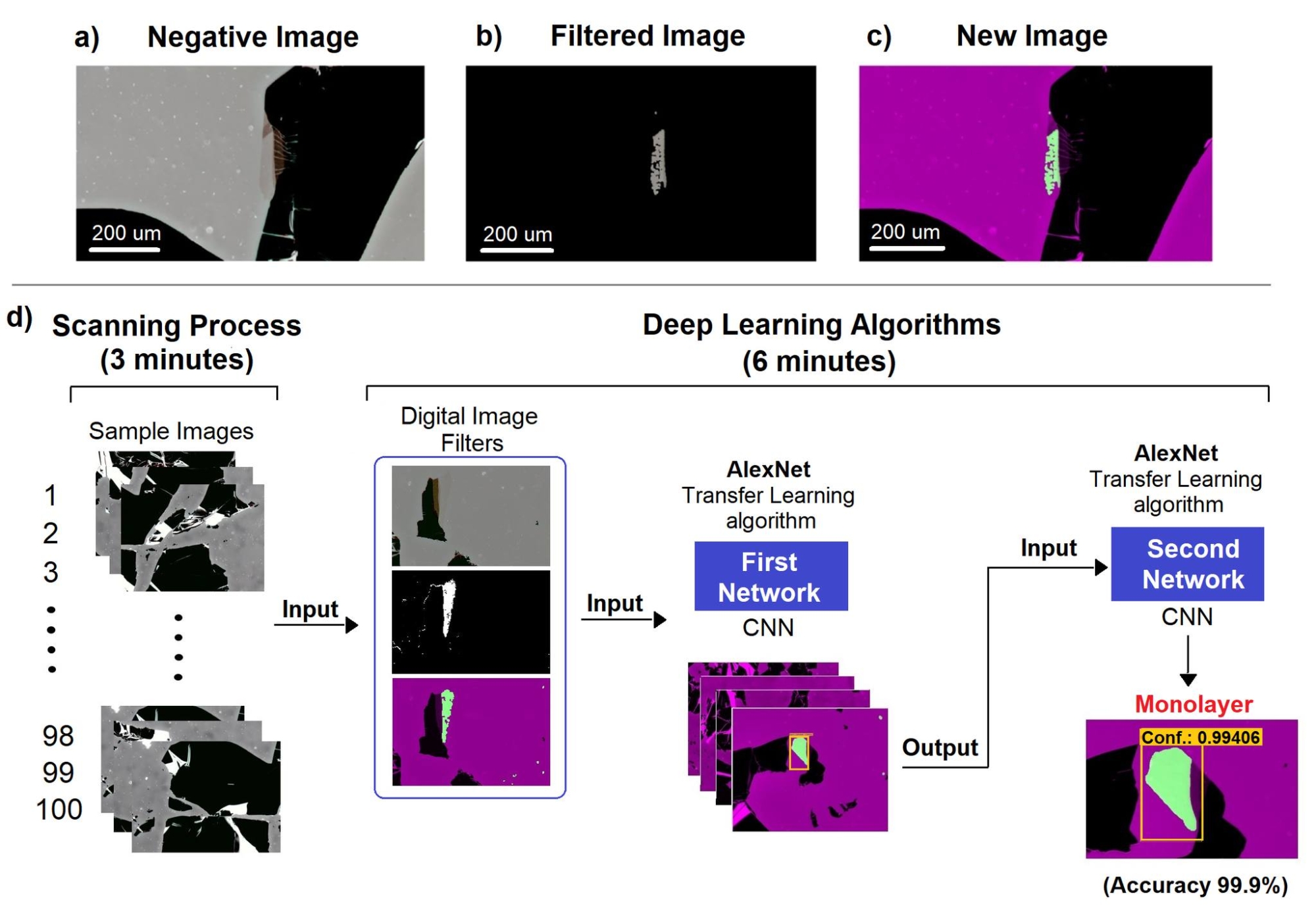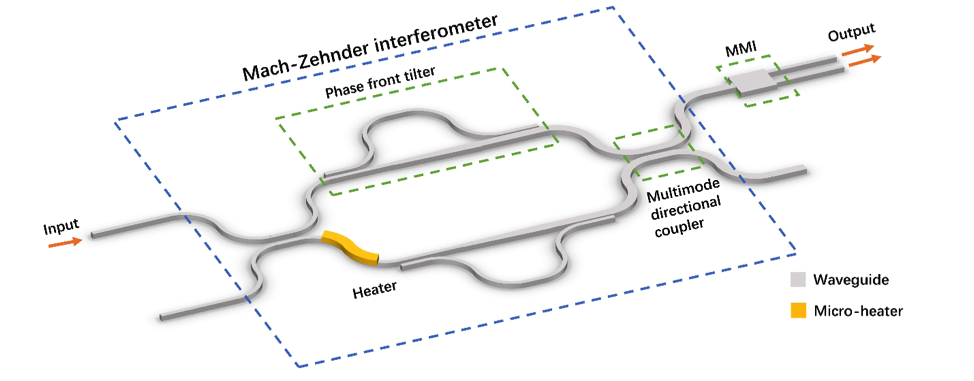Publications
2024
-
Jiewei Xiang, Meiting Song, Yi Zhang, Jennifer Kruschwitz, and Jaime Cardenas, “Ultrabroadband, High Color Purity Multispectral Color Filter Arrays,”
ACS Photonics 2024, 11, 1163−1172.
2023
- Granados-Baez, A. Mukherjee, L. Qiu, C. Chakraborty, A. N. Vamivakas, and J. Cardenas, “Characterization of the on-chip cavity coupled emission of 2D materials at room temperature,” 13(4), 843 – 849 (2023).
- Y. Zhang, J. Nauriyal, M. Song, M. Granados-Baez, X. He, T. MacDonald, and J. Cardenas, “Engineered second-order nonlinearity in silicon nitride,” 13(1), 237 – 246 (2023). Preprint: arXiv:2210.09374.
2022
- X. He, L. Cortes-Herrera, K. Opong-Mensah, Y. Zhang, G. P. Agrawal, and J. Cardenas, “Electrically induced adiabatic frequency conversion in an integrated lithium niobate ring resonator,” Opt. Letters, 47(22), 5849 – 5852 (2022). 10.1364/OL.473113.
- J. Sanchez-Juarez, M. Granados-Baez, A. Aguilar-Lasserre, and J. Cardenas, “Intelligent decision support system to optimize 2D materials detection using digital image processing and deep learning,” Opt. Mat. Express 12(5), 1856 – 1868 (2022).
- J. Steinmetz, K. Lyons, M. Song, J. Cardenas, and A. N. Jordan, “Enhanced on-chip frequency measurement using weak value amplification,” Opt. Express 30(3), 3700 – 3718 (2022). Preprint: arXiv:2103.15752.
2021
- L. Cortes-Herrera, X. He, J. Cardenas, and G.P. Agrawal, “Design of an X-cut thin-film lithium niobate waveguide as a passive polarization rotator,” Opt. Express 29(26), 44174 – 44188 (2021).
- M. Song, J. Steinmetz, Y. Zhang, J. Nauriyal, K. Lyons, A. N. Jordan, and J. Cardenas, “Enhanced on-chip phase measurement by inverse weak value amplification,” Nature Comms. 12(1), 1-7 (2021).
- J. Guimbao, L. Sanchis, L.M. Weituschat, J. M. Llorens, M. Song, J. Cardenas, and P.A. Postigo, “Machine learning optimization of a nanophotonic cavity for near unity photon indistinguishability at room temperature,” arXiv:2110.15000 (2021)*.
- L. Cortes-Herrera, X. He, J. Cardenas, and G. P. Agrawal, “Coupled-mode theory of the polarization dynamics inside a microring resonator with a uniaxial core,” Phys. Rev. A 103 (6), 063517 (2021).
- S. Roberts, X. Ji, J. Cardenas, M. Corato-Zanarella, and M. Lipson, “Measurements and modeling of atomic-scale sidewall roughness and losses in integrated photonic devices,” arXiv:2105.11477 (2021)*.
2020
- A. Mohanty, Q. Li, A. M. Tadayon, S. P. Roberts, G. R. Bhatt, E. Shim, X. Ji, J. Cardenas, S. A. Miller, A. Kepecs, and M. Lipson, “Reconfigurable nanophotonic silicon probes for sub-millisecond deep-brain optical stimulation,” Nature Biomedical Engineering, 1-9 (2020). Pre-print: arXiv:1805.11663
2019
- S. Saini, S. Preble, M. Popović, J. Cardenas, A. Kost, E. Verlage, G. Howland, and L. C. Kimerling. “Integrated photonics and application-specific design on a massive open online course platform,” In Education and Training in Optics and Photonics, p. 11143_151. Optical Society of America, 2019.
- J. Nauriyal, M. Song, R. Yu, and J. Cardenas, “Fiber-to-chip fusion splicing for low-loss photonic packaging,” Optica 6, 549 – 552 (2019).
2018
- J. Nauriyal, R. Yu, M. Song, and J. Cardenas, “Fiber to chip fusion splicing for robust, low loss photonic packaging,” arXiv:1810.09531 (2018).
- Y. Okawachi, M. Yu, J. Cardenas, X. Ji, A. Klenner, M. Lipson, and A. L. Gaeta, “Carrier envelope offset detection via simultaneous supercontinuum and second-harmonic generation in a silicon nitride waveguide,” Opt. Lett., 43(19), 4627-4630 (2018).
- A. Dutt, C. Joshi, X. Ji, J. Cardenas, Y. Okawchi, K. Luke, A. L. Gaeta, and M. Lipson, “On-chip dual-comb spectroscopy,” Sci. Adv. 4(3), e1701858 (2018).
- A. Mohanty, Q. Li, M. A. Tadayon, G. Bhatt, E. Shim, X. Ji, J. Cardenas, S. A. Miller, A. Kepecs, and M. Lipson, “A reconfigurable nanophotonics platform for sub-millisecond, deep brain neural stimulation,” arXiv:1805.11663 (2018).
2017
- R. Fain, F. Barbosa, J. Cardenas, and M. Lipson, “Photonic needles for light delivery in deep tissue-like media,” Sci. Rep. 7, 5627 (2017).
- S. A. Miller, M. Yu, X. Ji, A. G. Griffith, J. Cardenas, A. L. Gaeta, and M. Lipson, “Low-loss silicon platform for broadband mid-infrared photonics,” Optica 4, 707-712 (2017).
- X. Ji, F. AS. Barbosa, S. P. Roberts, A. Dutt, J. Cardenas, Y. Okawachi, A. Bryant, A. L. Gaeta, and M. Lipson, “Ultra-low-loss on-chip resonators with sub-milliwatt parametric oscillation threshold,” Optica 4, 619-624 (2017)
- S. A Miller, M. Yu, X. Ji, A. G. Griffith, J. Cardenas, A. L. Gaeta, and M. Lipson, “Low-Loss Silicon Platform for Broadband Mid-Infrared Photonics,” arXiv:1703.03517, 2017.
- Y. Okawachi, M. Yu, J. Cardenas, X. Ji, M. Lipson, and A. L. Gaeta, “Coherent, directional supercontinuum via cascaded dispersive wave generation,” arXiv:1708.03717 (2017).
- Y. Okawachi, M. Yu, J. Cardenas, X. Ji, M. Lipson, and A. L. Gaeta, “Coherent, directional supercontinuum generation,” Opt. Lett., 42(21), 4466-4469 (2017).
2016
- A. Dutt, C. Joshi, X. Ji, J. Cardenas, Y. Okawachi, K. Luke, A. L. Gaeta, M. Lipson, “On-chip dual comb source for spectroscopy,” arXiv:1611.07673, 2016.
- X. Ji, F. AS. Barbosa, S. P Roberts, A. Dutt, J. Cardenas, Y. Okawachi, A. Bryant, A. L. Gaeta, and M. Lipson, “Breaking the loss limitation of on-chip high-confinement resonators,” arXiv:1609.08699, 2016.
- A. Griffith, M. Yu, Y. Okawachi, J. Cardenas, A. Mohanty, A. Gaeta, and M. Lipson, “Coherent mid-infrared frequency combs in silicon-microresonators in the presence of Raman effects,” Opt. Express 24, 13044-13050 (2016).
- A. Griffith, M. Yu, Y. Okawachi, J. Cardenas, A. Mohanty, A. Gaeta, and M. Lipson, “Raman-assisted coherent, mid-infrared frequency combs in silicon micro resonators,” arXiv:1604.06436v1 (2016).
- A. Dutt, S. Miller, K. Luke, J. Cardenas, A. Gaeta, P. Nussenzveig, and M. Lipson, “Tunable squeezing using coupled ring resonators on a silicon nitride chip,” Opt. Lett. 41, 223-226 (2016).
2015
- M. Zhang, S. Shah, J. Cardenas, and M. Lipson, “Synchronization and Phase Noise Reduction in Micromechanical Oscillator Arrays Coupled through Light,” Phys. Rev. Lett. 115, 163902 (2015).
- J. Cardenas, M. Yu, Y. Okawachi, C. Poitras, R. Lau, A. Dutt, A. Gaeta, and M. Lipson, “Optical nonlinearities in high-confinement silicon carbide waveguides,” Opt. Lett. 40, 4138-4141 (2015).
- C. T. Phare, Y-H. D. Lee, J. Cardenas, and M. Lipson, “Graphene electro-optic modulator with 30 GHz bandwidth,” Nat. Photon. 9, 511–514 (2015).
- S. L. Mouradian, T. Schröder, C. B. Poitras, L. Li, J. Goldstein, E. H. Chen, M. Walsh, J. Cardenas, M. L. Markham, D. J. Twitchen, M. Lipson, and D. England, “Scalable integration of long-lived quantum memories into a photonic circuit,” Phys, Rev. X 5, 031009 (2015).
- M. Zhang, S. Shah, J. Cardenas, and M. Lipson, “Synchronization and phase noise reduction in micromechanical oscillators arrays coupled through light,” arXiv:1505.02009, 2015.
- A. Griffith, R. K. W. Lau, J. Cardenas, Y. Okawachi, A. Mohanty, R. Fain, Y-H. D. Lee, M. Yu, C. T. Phare, C. B. Poitras, A. L. Gaeta, and M. Lipson, “Silicon-chip mid-infrared frequency comb generation,” Nat. Commun. 6:6299 (2015).
- B. Stern, X. Zhu, C. Chen, L. Tzuang, J. Cardenas, K. Bergman, and M. Lipson, “On-chip mode-division multiplexing switch,” Optica 2, 530-535 (2015).
- B. Stern, X. Zhu, C. P. Chen, L. D. Tzuang, J. Cardenas, K. Bergman, and M. Lipson, “Integrated switch for simultaneous mode-division multiplexing (MDM) and wavelength-division multiplexing (WDM),” arXiv:1502.04692 (2015).
2014
- C. T. Phare, Y-H. D. Lee, J. Cardenas, and M. Lipson, “30 GHz zeno-based Graphene electro-optic modulator,” arXiv:1411.2053 (2014).
- S. Miller, K. Luke, Y. Okawachi, J. Cardenas, A. Gaeta, and M. Lipson, “On-chip frequency comb generation at visible wavelengths via simultaneous second- and third-order optical nonlinearities,” Opt. Express 22, 26517-26525 (2014).
- J. Cardenas, C. B. Poitras, K. Luke, L. W. Luo, P. A. Morton and M. Lipson, “High coupling efficiency etched facet tapers in silicon waveguides,” IEEE Photon. Technol. Lett. 26(23), 2380-2382 (2014).
- S. L. Mouradian, T. Schroder, C. B. Poitras, L. Li, J. Goldstein, E. H. Chen, J. Cardenas, M. L. Markham, D. J. Twitchen, M. Lipson, and D. Englund, “The scalable integration of long-lived quantum memories into a photonic circuit,” arXiv:1409.7965 (2014).
- A. Griffith, R. K. W. Lau, J. Cardenas, Y. Okawachi, A. Mohanty, R. Fain, Y-H. D. Lee, M. Yu, C. T. Phare, C. B. Poitras, A. L. Gaeta, and M. Lipson, “Silicon-chip mid-infrared frequency comb generation,” arXiv:1408.1039 (2014).
2013
- B. Guha, J. Cardenas, and M. Lipson, “Athermal silicon microring resonators with titanium oxide cladding,” Opt. Express, 21, 26557-26563 (2013).
- J. Cardenas, P. A. Morton, J. B. Khurgin, A. Griffith, C. B. Poitras, K. Preston, and M. Lipson, “Linearized silicon modulator based on a ring assisted Mach Zehnder interferometer,” Opt. Express, 21, 22549-22557, (2013).
- J. Cardenas, M. Zhang, C. T. Phare, S. Y. Shah, C. B. Poitras, and M. Lipson, “High Q SiC microresonators,” Opt. Express, 21 (2013).
2012
- A. Griffith, J. Cardenas, C. Poitras, and M. Lipson, “High quality factor and high confinement silicon resonators using etchless process,” Opt. Express 20, 21341-21345 (2012).
- P. A. Morton, J. Cardenas, J. B. Khurgin and M. Lipson, “Fast thermal switching of wideband optical delay line with no long-term transient,” IEEE Photon. Technol. Lets. 24 (6,) 512-514 (2012).
- A. Johnson, Y. Okawachi, J. Levy, J. Cardenas, K. Saha, M. Lipson, and A. Gaeta, “Chip-based frequency combs with sub-100 GHz repetition rates,” Opt. Lett. 37, 875-877 (2012).
2011
- L. Luo, G. Wiederhecker, J. Cardenas, C. Poitras, and M. Lipson, “High quality factor etchless silicon photonic ring resonators,” Opt. Express 19, 6284-6289 (2011).
2010
- J. Cardenas, M. Foster, N. Sherwood-Droz, C. Poitras, H. Lira, B. Zhang, A. Gaeta, J. Khurgin, P. Morton, and M. Lipson, “Wide-bandwidth continuously tunable optical delay line using silicon microring resonators,” Opt. Express 18, 26525-26534 (2010).
2008
- J. Noh, R. Anderson, S. Kim, J. Cardenas, and G. Nordin, “In-plane photonic transduction of silicon-on-insulator microcantilevers,” Opt. Express 16, 12114-12123 (2008).
2006
- Y. Lin, J. Cardenas, S. Kim, and G. Nordin, “Reduced loss through improved fabrication for single air interface bends in polymer waveguides,” Opt. Express 14, 12803-12813 (2006).
- L. Li, J. Cardenas, J. Jiang, G. Nordin, “Compact integrated depolarizer for IFOG,” Opt. Eng. 45 (5), (2006).
2004
- J. Cardenas, L. Li, S. Kim, and G. Nordin, “Compact low loss single air interface bends in polymer waveguides,” Opt. Express 12, 5314-5324 (2004).

